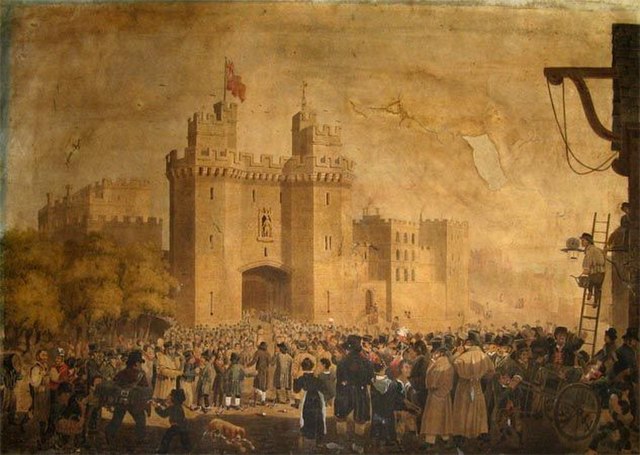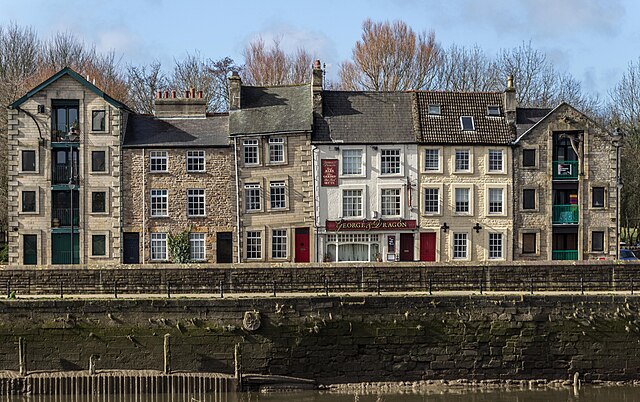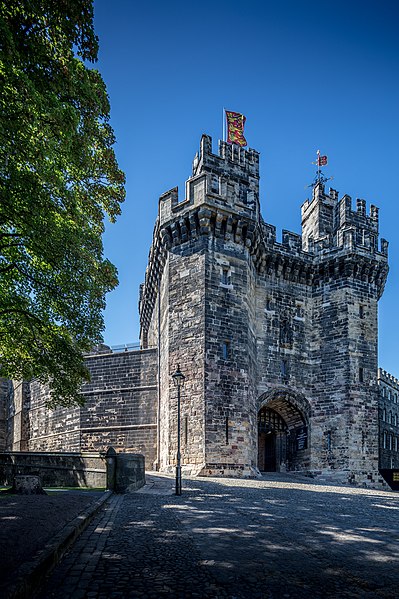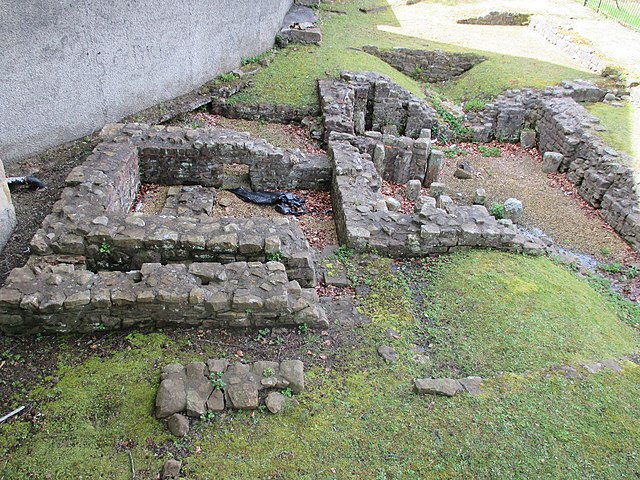Lancaster Castle is a medieval castle and former prison in Lancaster in the English county of Lancashire. Its early history is unclear, but it may have been founded in the 11th century on the site of a Roman fort overlooking a crossing of the River Lune. In 1164 the Honour of Lancaster, including the castle, came under royal control. In 1322 and 1389 the Scots invaded England, progressing as far as Lancaster and damaging the castle. It was not to see military action again until the English Civil War. The castle was first used as a prison in 1196 although this aspect became more important during the English Civil War. The castle buildings are owned by the British sovereign as Duke of Lancaster; part of the structure is used to host sittings of the Crown Court.
Lancaster Castle as seen from the Ashton Memorial
A watercolour by Thomas Hearne from 1778 of the west of Lancaster's keep. The round tower next to the keep was demolished in 1796.
The castle's 15th-century gatehouse, in a 19th-century depiction by an unknown artist, with new inmates arriving at the castle when it was used as a prison.
Two of the Pendle witches, tried at Lancaster in 1612, in an illustration from William Harrison Ainsworth's 1849 novel The Lancashire Witches
Lancaster is a city in Lancashire, England and the main cultural hub, economic and commercial centre of City of Lancaster district. The city is on the River Lune directly inland from Morecambe Bay. Lancaster is the county town although Lancashire County Council has been based at County Hall in Preston since its formation in 1889.
Image: St George's Quay geograph.org.uk 4878049
Image: The Ashton Memorial in Lancaster (12311695365)
Image: Lancaster Castle (216584793)
Roman bath house on Castle Hill








